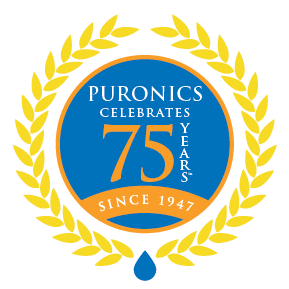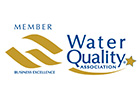Last Updated on March 24, 2021
Softeners, filters, purifiers…what does it all mean? If you have ever been confused about whole-house water treatment, you’re not alone. We’ll go over how whole-house systems work, clarifying some common questions and misconceptions along the way.
How Whole-House Water Treatment Systems Work
A “whole-house” water treatment system is opposed to a single-point water treatment system. Think of an individual water filter attached to a kitchen faucet. More specific terms used to describe this are “point-of-entry” vs “point-of-use”. A point-of-use system would be attached to a single faucet or showerhead, and a point-of-entry system is connected where the water supply enters the house, creating a “whole-house” water treatment system.
In this way, a whole-home water treatment system treats the water used at every point in a house. For some applications, this is perfect. You might want every appliance and faucet in your home to use softened water, so you would use a point-of-entry (a whole-house) water softener system. You may want purified drinking water, but don’t need your dishwasher to have perfectly pure reverse osmosis filtered water. For this reason, some water filtration systems are attached at the point-of-use.
Now that you have a basic understanding of whole-house water treatment systems, let’s examine a few common misconceptions you may run across as you look at water softeners or other home water treatment options.
Myth: Hard Water Can Be Softened Without Salt
Truth: No, and there is no such thing as a saltless water softener. Hard water contains a significant amount of calcium and magnesium which can cause a variety of problems. To soften the water, the calcium and magnesium are removed through a process called ion exchange. No salt filtration systems convert the hard water minerals into micro crystals, which reduces the potential for scale build-up. A no salt filtration system may still be the best water treatment system for your home, but you should understand that it is not providing soft water.
Myth: Whole-House Water Treatment Systems Damage Appliances
Truth: A water softener will extend the life and improve the efficiency of your water-using appliances. This is because hard water causes damage to appliances such as water heaters, laundry machines and dishwashers. A 2009 study commissioned by the Water Quality Research Foundation and conducted by the Battelle Memorial Institute found that running hard water through water heaters cut efficiency by up to 48 percent. Also, you can protect the rubber parts of appliances from the drying out effects of chlorine by installing a whole-house water filter containing activated carbon. This means less frequent repairs and replacements. Puronics offers whole-house water treatment systems which both soften and filter your water.
Myth: Reverse Osmosis Will Solve Everything
Truth: Most reverse osmosis systems only purify water at a point-of-use, like a kitchen sink. This means other water-using appliances, like your laundry machine, are using raw tap water. If you have hard water, it will still cause damage to your pipes and appliances, make cleaning more difficult and dry your skin and hair. The reason you probably don’t want a whole-house reverse osmosis system is that it is inefficient. Most reverse osmosis systems waste about 3 gallons of water for every gallon of treated water. This means your water bill will go up significantly even if you reduce your water usage. If just used for drinking and cooking, a reverse osmosis system will have very little impact.
Still have questions about whole-house water treatment systems? Request a free consultation today to find the right solution for your water problems.
© Copyright 2021 Puronics, Inc. All rights reserved.

 Puronics, Incorporated
Puronics, Incorporated


